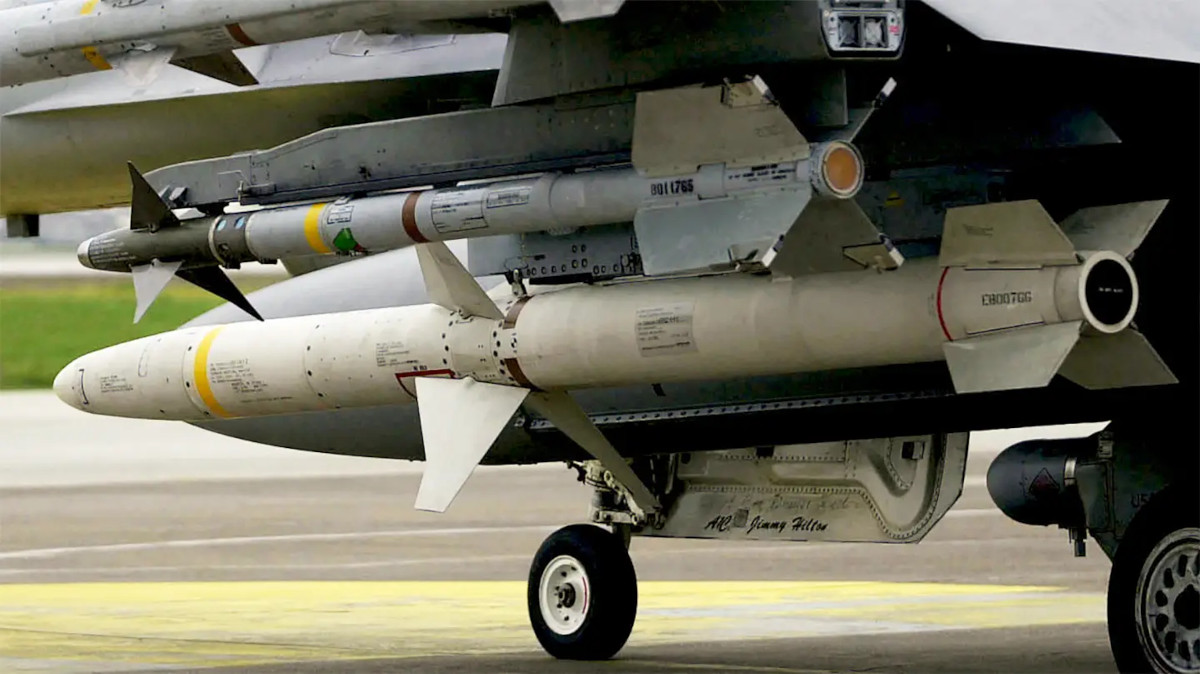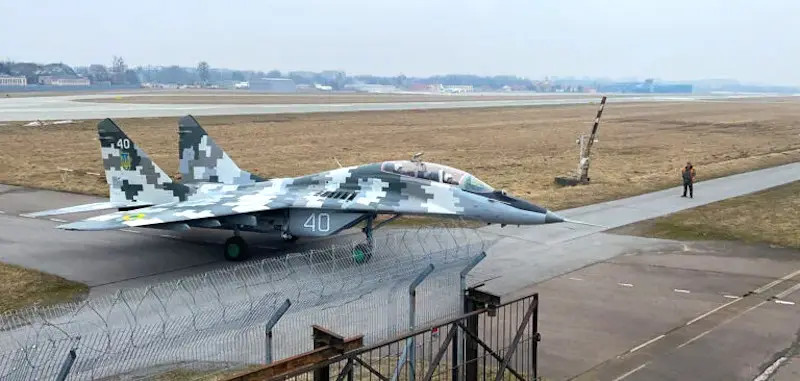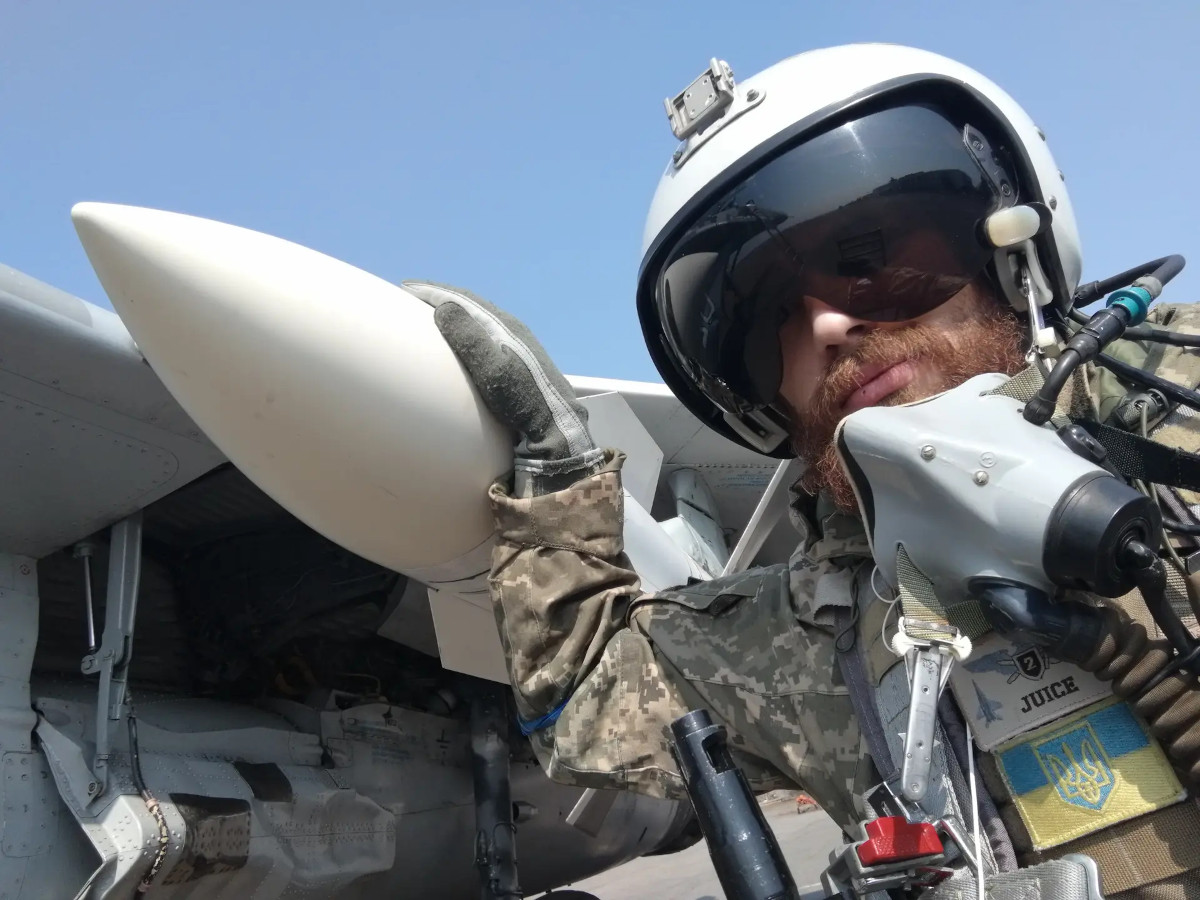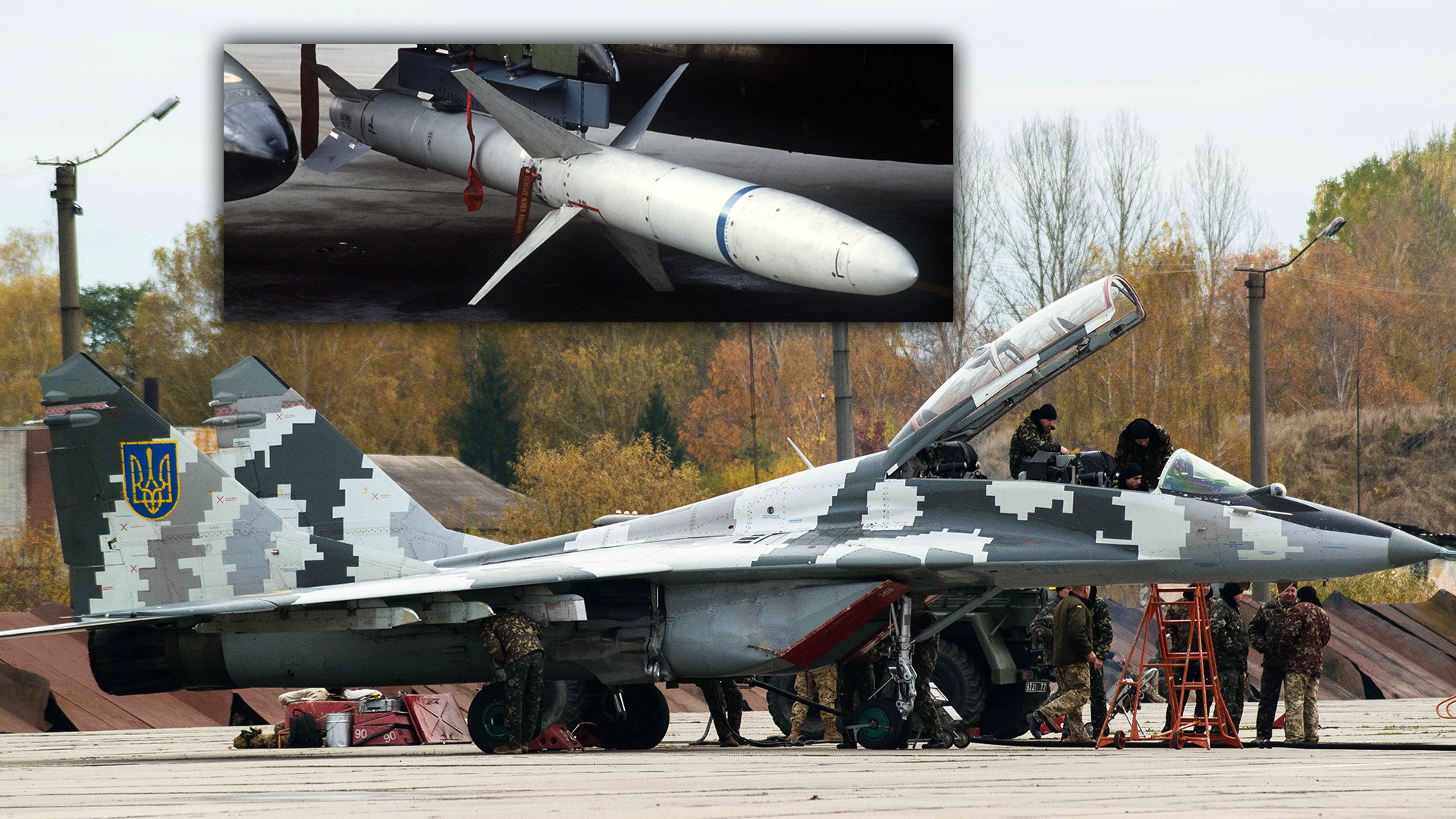The Pentagon has now officially confirmed that it has transferred AGM-88 High-speed Anti-Radiation Missiles, or HARMs, to the Ukrainian Air Force. This comes nearly two weeks after U.S. Under Secretary of Defense for Policy Colin Kahl had confirmed the delivery of unspecified anti-radiation missiles to Ukraine’s armed forces. The evidence of HARM usage in Ukraine had first appeared on social media just days before Kahl’s comments, and more had subsequently emerged online.
In addition, a senior U.S. defense official, speaking to The War Zone and other outlets today, disclosed that the Ukrainians integrated these missiles, with American assistance, onto their “MiG aircraft.” The only MiGs that are currently in service in Ukraine are its MiG-29 Fulcrum fighter jets.
Anti-radiation missiles like the AGM-88 are primarily designed to home in on enemy signal emitters, especially air defense radars, including those directly associated with surface-to-air missile systems, and neutralize them.

The press call with the senior U.S. defense official was centered on details about a new U.S. military aid package for Ukraine, which is valued at up to $775 million. In addition to the HARMs, it includes 227mm GMLRS precision-guided artillery rockets for use with U.S.-supplied High Mobility Artillery Rocket Systems (HIMARS) and variants of the M270 Multiple Launch Rocket System (MLRS) provided by other Western countries, TOW and Javelin anti-tank missiles, 105mm M119 howitzers and ammunition for them, ammunition for the 84mm Garl Gustav family of shoulder-fired launchers, Scan Eagle drones, MaxxPro mine-resistant vehicles with mine rollers, and up-armored Humvees, among other things. This is the first time the Pentagon has publicly acknowledged transfers of TOWs, M119s, Scan Eagles, and MaxxPros to Ukraine.
Speaking on HARM specifically, the senior defense official had the following to say at various points in the call:
“First, we are providing additional High-speed Anti-Radiation Missiles. These are the HARM missiles. Ukraine has successfully employed these missiles. They have successfully integrated them on to Ukrainian aircraft, and this enables Ukraine to seek and destroy Russian radar. So we’ll be providing additional HARM missiles.”
…
“The aircraft that the Ukrainians have integrated – and you’re right, this is a Western produced missile – the aircraft that they have integrated it with is their MiG aircraft. So they have actually successfully integrated it. [This] is something that we determined would be technically feasible. And based on that feasibility determination, we provided them with this capability. So this is actually the second tranche of HARMs that we’re providing.”
…
“So on the HARM, when we first announced the initial provision of HARM missiles, the way that we characterized it in the announcement was not specific. We described that we were providing a counter-radar capability. But we have spoken to it publicly. I think Dr. Kahl is the most recent – Dr. Colin Kahl – recently did reference it in a briefing here at the Pentagon. We do want to be careful about how we talk publicly about capabilities that will give Ukraine a significant asymmetric and unexpected advantage. In this case, we have seen them using it successfully. So we are more comfortable discussing it.”
Exactly what AGM-88 variants the U.S. military has provided to the Ukrainians, how the integration of those missiles onto the MiG-29 was specifically achieved, and what modes the weapons can be employed in from those aircraft all remain unclear. The War Zone has explored in detail how all this might work, as you can read more about here.
Beyond the Ukrainian Air Force’s much-in-demand single-seat MiG-29s, it is worth pointing out that the Ukrainian Air Force’s number of two-seat MiG-29UBs, which are ostensibly trainers, but still have limited combat capabilities. They lack a radar among a handful of other differences and are less critical to the air war than their single-seat counterparts. As such, they might have been good candidates for this integration work. Having a backseater could help with the additional workload that might come along with employing AGM-88s, if there is any robust in-cockpit control capability at all.

What is now clear beyond a shadow of a doubt is that the Ukrainian Air Force has a HARM capability and that it is being actively employed with a sufficient degree of success that American officials are now willing to send more of these missiles. This gives Ukraine’s military an important new stand-off tool to suppress or destroy Russian air defense. This, in turn, can only help reduce the threats to their aircraft, allowing them to operate more effectively and flexibly. Ukrainian fighter pilots speaking to The War Zone and other outlets in the past have highlighted the operation limitations imposed by Russia’s surface-to-air missiles, as well as its combat aircraft, and have stressed the need for help to be better able to carry out suppression and destruction of enemy air defense missions, also referred to collectively SEAD/DEAD.

But above even that, the presence of HARM puts the Russian air defenses at risk, especially those close to the front lines. This will have a chilling effect on how often they emit and how close they deploy to Ukrainian-controlled territory. It also allows the Ukrainian Air Force to hunt air defenses at a relatively safer distance.
The U.S. military’s transfer of AGM-88s to the Ukrainian Air Force, and now its formal confirmation of that, is also yet another example of an increased willingness on the part of American authorities to include more advanced weapon systems in aid packages. Deliveries of HIMARS launchers and GMLRS rockets, as well as plans to provide National Advanced Surface to Air Missile Systems (NASAMS), are other prime examples of how U.S. policy has changed on this front in recent months. “On the NASAMS delivery, we’re expecting that to be within the next two to three months,” the senior defense official said during the call today.
There have been similar policy shifts observed among America’s NATO allies, too. For instance, just today, the German government revealed that it is planning to transfer 255 Leonardo Vulcano 155mm precision-guided artillery shells to the Ukrainian military. PzH 2000 tracked self-propelled 155mm howitzers, examples of which the Germans, Italians, and Dutch have sent to the Ukrainians, are among the artillery systems known to be able to fire these rounds. The original versions of Vulcano were designed to be fired from naval guns.

German authorities also say they will send the Ukrainian armed forces pickup trucks armed with launchers for 70mm laser-guided rockets. The U.S. government previously announced a still largely unexplained transfer of 70mm Advanced Precision Kill Weapon System II laser-guided rockets, which you can read more about here, raising questions about whether these two things may be in some way related.
However, to date, the U.S. government, as well as its allies and partners, still have not publicly announced plans to provide Ukraine with additional combat aircraft, especially Western-made fighter jets. This is something that has been and remains a hot-button issue, as you can read more about here. The senior U.S. defense official had the following to say on that topic today:
“This is something where we certainly are looking at the Ukrainian Armed Forces, needs in every domain, in the current and in the future. In the current, our focus has been on capabilities that we can get them quickly that they can use in the current fight in now east and south Ukraine. So, in terms of aviation, we’ve focused on how we can enhance their existing aircraft fleet. That’s where the HARM missiles come into play, giving that them that additional advantage. We’ve also sourced from around the world 1,000s of spare parts for their MiGs. But in the future, we’re also looking at other capabilities that we might be able to provide them, and we’re doing work now on what the future of Ukrainian armed forces will look like. And considering all possibilities.”
However, discussions between American and Ukrainian officials on the matter of combat aircraft may or may not continue to evolve, the scope of what military aid the U.S. government is willing to send only continues to expand. That assistance now includes the AGM-88 HARMs that Ukrainian pilots flying MiG-29s are now actively shooting at Russian air defenders.
Contact the author: joe@thedrive.com
